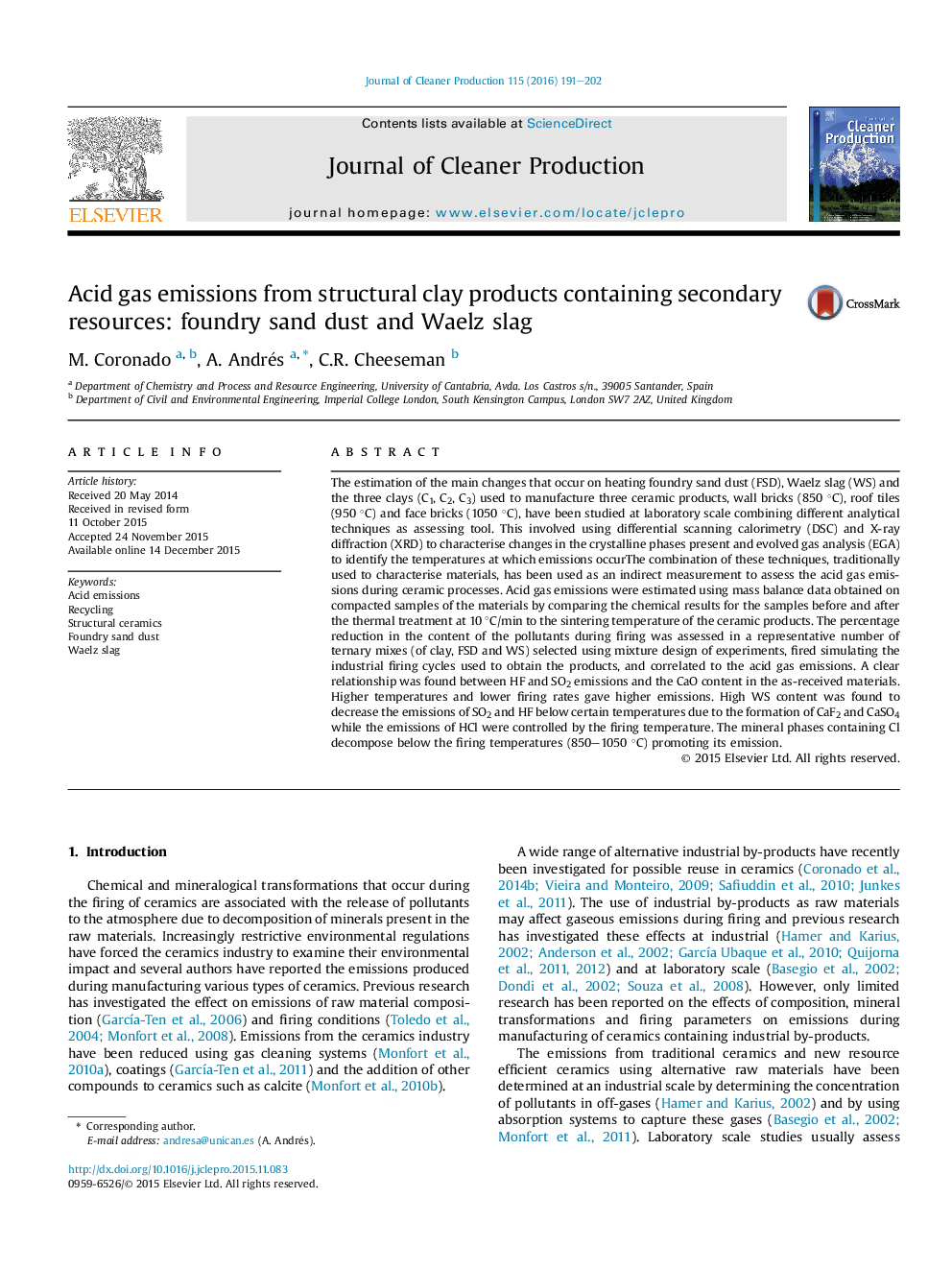| کد مقاله | کد نشریه | سال انتشار | مقاله انگلیسی | نسخه تمام متن |
|---|---|---|---|---|
| 8102639 | 1522134 | 2016 | 12 صفحه PDF | دانلود رایگان |
عنوان انگلیسی مقاله ISI
Acid gas emissions from structural clay products containing secondary resources: foundry sand dust and Waelz slag
دانلود مقاله + سفارش ترجمه
دانلود مقاله ISI انگلیسی
رایگان برای ایرانیان
موضوعات مرتبط
مهندسی و علوم پایه
مهندسی انرژی
انرژی های تجدید پذیر، توسعه پایدار و محیط زیست
پیش نمایش صفحه اول مقاله

چکیده انگلیسی
The estimation of the main changes that occur on heating foundry sand dust (FSD), Waelz slag (WS) and the three clays (C1, C2, C3) used to manufacture three ceramic products, wall bricks (850 °C), roof tiles (950 °C) and face bricks (1050 °C), have been studied at laboratory scale combining different analytical techniques as assessing tool. This involved using differential scanning calorimetry (DSC) and X-ray diffraction (XRD) to characterise changes in the crystalline phases present and evolved gas analysis (EGA) to identify the temperatures at which emissions occurThe combination of these techniques, traditionally used to characterise materials, has been used as an indirect measurement to assess the acid gas emissions during ceramic processes. Acid gas emissions were estimated using mass balance data obtained on compacted samples of the materials by comparing the chemical results for the samples before and after the thermal treatment at 10 °C/min to the sintering temperature of the ceramic products. The percentage reduction in the content of the pollutants during firing was assessed in a representative number of ternary mixes (of clay, FSD and WS) selected using mixture design of experiments, fired simulating the industrial firing cycles used to obtain the products, and correlated to the acid gas emissions. A clear relationship was found between HF and SO2 emissions and the CaO content in the as-received materials. Higher temperatures and lower firing rates gave higher emissions. High WS content was found to decrease the emissions of SO2 and HF below certain temperatures due to the formation of CaF2 and CaSO4 while the emissions of HCl were controlled by the firing temperature. The mineral phases containing Cl decompose below the firing temperatures (850-1050 °C) promoting its emission.
ناشر
Database: Elsevier - ScienceDirect (ساینس دایرکت)
Journal: Journal of Cleaner Production - Volume 115, 1 March 2016, Pages 191-202
Journal: Journal of Cleaner Production - Volume 115, 1 March 2016, Pages 191-202
نویسندگان
M. Coronado, A. Andrés, C.R. Cheeseman,